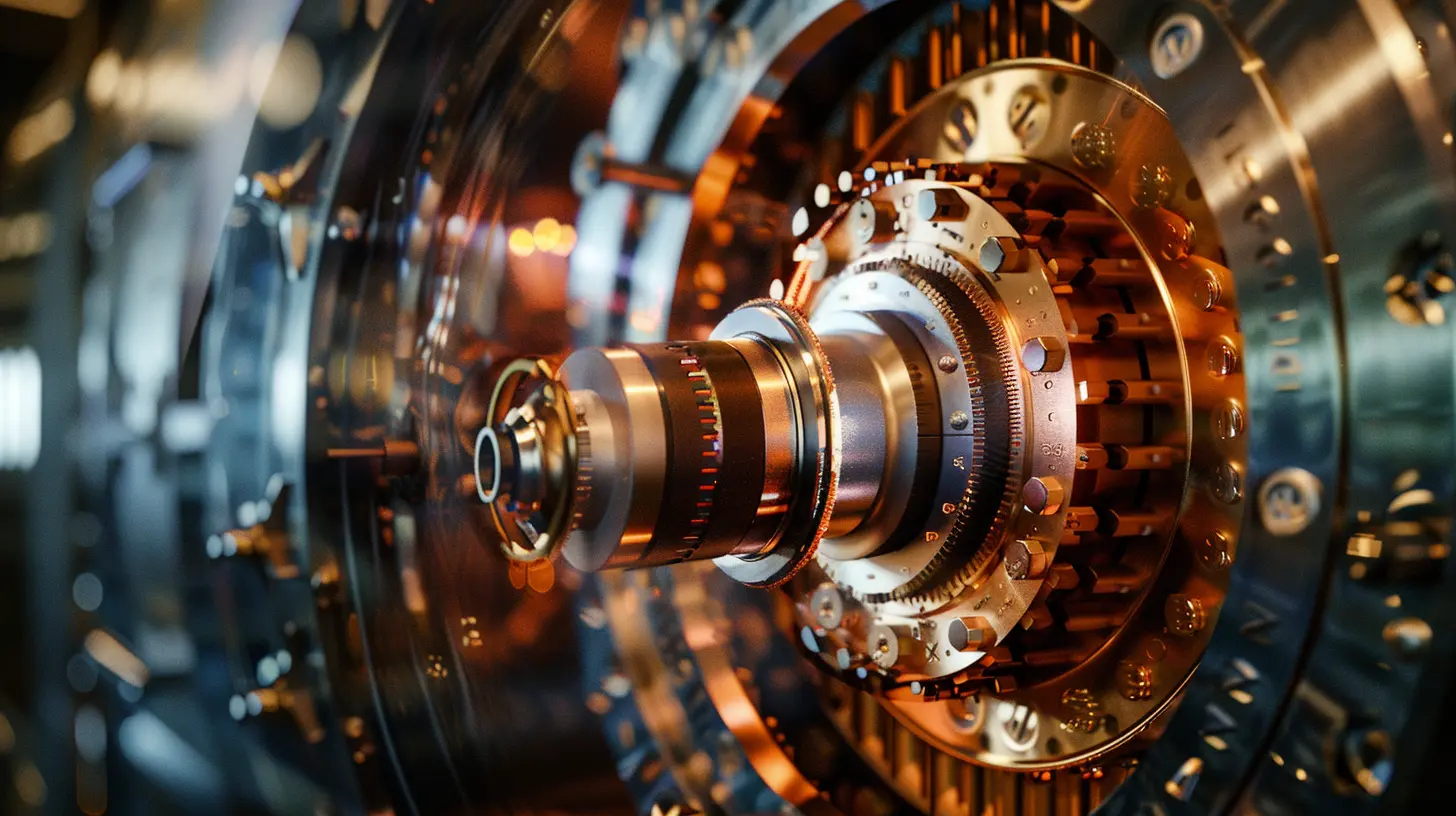The Role of Qubits in Quantum Computing Explained
14 November 2025
Quantum computing sounds like something straight out of a sci-fi movie, right? Tiny particles doing strange things, computers crunching numbers at warp speed, and the future of tech hanging in the balance. At the heart of this futuristic world is something called a “qubit.” Sounds cute and harmless—but don’t let the name fool you.
If you’ve been scratching your head wondering what a qubit actually is and why it’s so important, you’re in the right place. In this post, we’ll break it all down in plain English. No PhD in physics required—promise.
What Is a Qubit, Anyway?
Let’s start with the basics.Think of a classical bit—those 1s and 0s—like a light switch. It can be either on (1) or off (0). Simple and binary. This is how your current laptop or smartphone works under the hood.
Now, imagine that same light switch, but instead of just on or off, it could be in both states at once. That’s basically what a qubit does. It’s not just a 0 or a 1; it can be both at the same time. Mind-blowing, right?
This bizarre behavior is thanks to quantum mechanics. So in essence, a qubit is the fundamental building block of quantum computers, just like a bit is for classical computers—but with a quantum twist.
The Magic Behind Qubits: Superposition
Okay, let’s talk about the superpower of qubits: superposition.In classical computing, a bit is either a 1 or a 0. But a qubit? It can be 0, 1, or a mixture of both 0 and 1 at the same time. Imagine spinning a coin—it’s not heads or tails until it lands. While it’s spinning, it's in a superposition of both states.
This means that with more qubits, a quantum computer can process a huge number of possibilities at once. Two qubits can represent four states. Three qubits? Eight states. Ten qubits? 1,024 states. You can see how this scales ridiculously fast.
This is one of the main reasons why people are so hyped about quantum computing—it’s like giving your computer a jetpack.
Entanglement: When Qubits Get Cozy
Here’s where things get even weirder—in a cool way.Entanglement is a quantum phenomenon where two or more qubits become linked. When this happens, the state of one qubit instantly affects the state of the other, no matter how far apart they are. Yep, even if they’re light-years away. Einstein called it “spooky action at a distance,” and honestly, it kinda is.
Why is this useful? Because entangled qubits can carry out complex computations far more efficiently than classical bits. They essentially “talk” to each other in a way that bits just can’t. It’s teamwork on steroids.
Quantum Gates: Flipping and Twisting Qubits
Okay, we’ve got qubits doing superposition and entanglement. Pretty cool. But how do we actually use them to compute stuff?That’s where quantum gates come in. Think of them as the instruction sets or logic gates of quantum computers.
In classical computers, logic gates perform basic operations like AND, OR, and NOT. In quantum computers, we have quantum gates like:
- Hadamard Gate (H): Puts a qubit into superposition.
- Pauli-X Gate: Like a classical NOT gate, flips the qubit.
- CNOT Gate: A control gate that entangles qubits.
- T Gate and S Gate: Rotate qubits to different quantum states.
What’s wild here is that quantum gates manipulate the qubit's state not just in binary terms, but across a spectrum of possibilities—think of it like rotating and stretching a rubber band in multiple dimensions.
The Role Qubits Play in Quantum Supremacy
You might’ve heard about “quantum supremacy.” It’s that big milestone where a quantum computer does something that a classical computer just can’t—at least not in a reasonable amount of time.And guess who's the star of the show? Yep, qubits.
The more qubits you have, and the better quality they are (less prone to error), the more powerful your quantum computer. But it’s not just about quantity—it’s about coherence, stability, and error rates. Qubits are extremely sensitive. They can lose their quantum properties just by interacting with the environment—a problem called decoherence.
Managing this is a huge part of making quantum computing actually usable. We're not there yet, but we're inching closer each year.
Physical Qubits vs. Logical Qubits
Here’s a curveball: not all qubits are created equal.Because qubits are so fragile, scientists use multiple physical qubits to create a single logical qubit—one that’s more robust and reliable.
Think of it like using a group of unreliable people to form a reliable committee. Individually they’re flaky, but as a group with checks and balances—they get the job done.
A fault-tolerant quantum computer, which can perform long and complex tasks without crashing, will likely need thousands of physical qubits to make each logical qubit. So yeah, we’re still working on scaling this mountain.
Types of Qubits: Not All Qubits Are the Same
Believe it or not, there are multiple ways to make a qubit. Scientists are getting pretty creative with it. Let’s take a look:1. Superconducting Qubits
Used by IBM, Google, and several others. These use tiny electrical circuits cooled to near absolute zero to show quantum behavior.2. Trapped Ion Qubits
These use actual atoms (ions) trapped in electric fields. Lasers control their state. They’re extremely stable but harder to scale.3. Photonic Qubits
These use particles of light. Super fast and hard to interrupt, but tricky to manipulate.4. Topological Qubits
Still experimental. These promise high error-resistance thanks to the bizarre way they store information using the paths particles travel.Each type has its pros and cons, and no one knows yet which one will win the race to mainstream quantum computing.
Real-World Uses: Where Qubits Will Shine
So why all the fuss? Here’s where qubits—and quantum computing—can seriously shake things up:- Cryptography: Breaking modern encryption in minutes. (Don’t worry, it’ll also help create quantum-safe encryption.)
- Drug Discovery: Simulating molecules in quantum detail to develop treatments faster.
- Logistics and Traffic: Optimizing routes and supply chains with mind-boggling efficiency.
- Climate Modeling: Predicting weather and climate changes with more accuracy.
- AI and Machine Learning: Crunching through massive datasets and accelerating learning models.
Basically, anything that’s super complex and involves huge amounts of data—quantum computers with their magical qubits can potentially do it way faster than classical systems.
Challenges Ahead: Why Aren’t We There Yet?
If qubits are so amazing, why don’t we have quantum smartphones already?Well, building and maintaining qubits is ridiculously hard. They require:
- Ultra-low temperatures (colder than space!)
- Isolation from all types of interference
- Advanced error correction algorithms
- Massive engineering feats
Plus, we still need better software, frameworks, and training for developers to actually work with these systems. It’s not just a tech issue—it’s also educational and infrastructural.
Final Thoughts
Qubits are the soul of quantum computing. Without them, we wouldn’t even be having this conversation. They defy our classical understanding of how computers should work, and in doing so, open up an entirely new frontier of possibilities.Sure, we’ve got a long road ahead, but every step we take—from understanding entanglement to battling decoherence—brings us closer to harnessing their full potential.
So next time you hear about quantum computers doing incredible things, remember the unsung heroes making it all happen—qubits. Weird, wonderful, and powerful little rebels rewriting the rules of computing as we know it.
all images in this post were generated using AI tools
Category:
Quantum ComputingAuthor:

Adeline Taylor
Discussion
rate this article
1 comments
Zephyris McQuaid
Great explanation! Qubits truly are fascinating and pivotal to quantum computing's future.
November 14, 2025 at 1:47 PM

Adeline Taylor
Thank you! I'm glad you found it interesting—qubits really are the key to unlocking quantum computing's potential!


